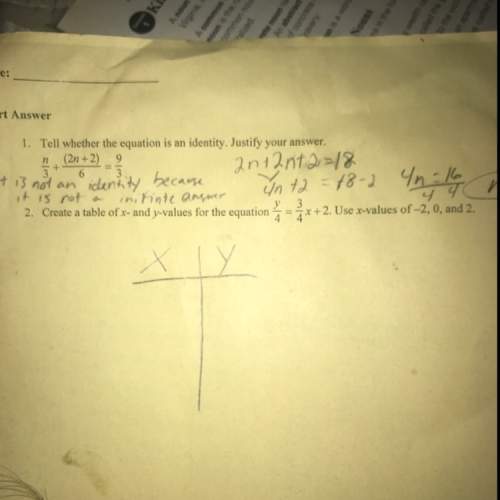
Physics, 09.04.2021 23:50 samariahmiddlebrooks
A student examined the motion of waves on a Slinky® by oscillating a spring along the floor. The student took a snapshot of the motion as shown below:
Refer to the graph shown above. The student oscillates the spring 4 times per second.
What is the velocity of the wave?

Answers: 3


Another question on Physics

Physics, 22.06.2019 04:10
You will be galileo perform the experiment to determine if objects with different mass fall at the same, or different, rates in the air and in a vacuum. (refer to the walk-through video to locate the online lab within the online textbook).
Answers: 2

Physics, 22.06.2019 06:30
Suppose you have a box. which of these is not necessarily a true statement regarding the relationship between the force applied to the box, the work done on the box, and the distance the box is moved? a. if the box is not moved, no force is being applied to the box. b. if no force is applied to the box, no work is done on the box. c. if work is done on the box, then a force is applied to the box. d. if work is done on the box, then the box is moved a distance.
Answers: 2

Physics, 22.06.2019 11:50
An electron is traveling with initial kinetic energy k in a uniform electric field. the electron comes to rest momentarily after traveling a distance d. (a) what is the magnitude of the electric field
Answers: 3

Physics, 22.06.2019 15:00
Astudent throws a water balloon with speed v0 from a height h = 1.76 m at an angle θ = 21° above the horizontal toward a target on the ground. the target is located a horizontal distance d = 9.5 m from the student’s feet. assume that the balloon moves without air resistance. use a cartesian coordinate system with the origin at the balloon's initial position. (a) what is the position vector, rtarge t, that originates from the balloon's original position and terminates at the target? put this in terms of h and d, and represent it as a vector using i and j. (b) in terms of the variables in the problem, determine the time, t, after the launch it takes the balloon to reach the target. your answer should not include h. (c) create an expression for the balloon's vertical position as a function of time, y(t), in terms of t, vo, g, and θ. (d) determine the magnitude of the balloon's initial velocity, v0, in meters per second, by eliminating t from the previous two expressions.
Answers: 3
You know the right answer?
A student examined the motion of waves on a Slinky® by oscillating a spring along the floor. The stu...
Questions






Mathematics, 27.06.2019 07:00


Social Studies, 27.06.2019 07:00


History, 27.06.2019 07:00



Mathematics, 27.06.2019 07:00










